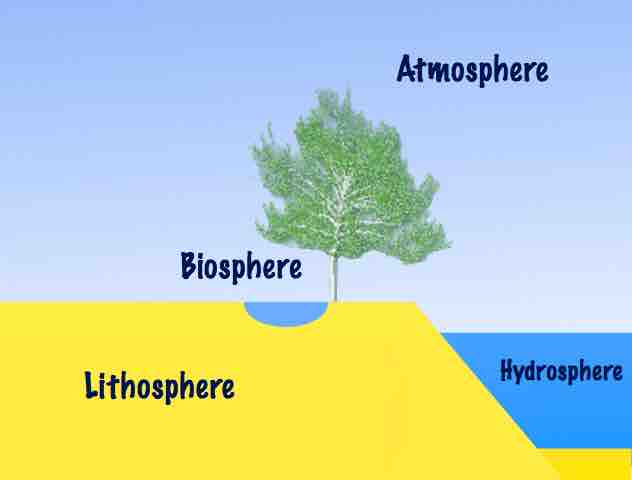Biogeochemocal Cycles: Introduction
Energy flows directionally through ecosystems, entering as sunlight (or inorganic molecules for chemoautotrophs) and leaving as heat during the many transfers between trophic levels. However, the matter that makes up living organisms is conserved and recycled. The six most common elements associated with organic molecules (carbon, nitrogen, hydrogen, oxygen, phosphorus, and sulfur) take a variety of chemical forms and may exist for long periods in the atmosphere, on land, in water, or beneath the earth's surface. Geologic processes, such as weathering, erosion, water drainage, and the movement of the continental plates, all play a role in this recycling of materials. Because geology and chemistry have major roles in the study of this process, the recycling of inorganic matter between living organisms and their environment is called a biogeochemical cycle.
The components of organic molecules are constantly being stored and recycled as part of their biogeochemical cycle. Water, which contains hydrogen and oxygen, is essential to all living processes. The hydrosphere is the area of the earth where water movement and storage occurs. Water can be liquid on the surface and beneath the surface or frozen (rivers, lakes, oceans, groundwater, polar ice caps, and glaciers) or exist as water vapor in the atmosphere . Carbon, found in all organic macromolecules, is an important constituent of fossil fuels. Nitrogen, a major component of our nucleic acids and proteins, is critical to human agriculture. Phosphorus, a major component of nucleic acid (along with nitrogen), is one of the main ingredients in artificial fertilizers used in agriculture and their associated environmental impacts on our surface water. Sulfur, critical to the 3–D folding of proteins (as in disulfide binding), is released into the atmosphere by the burning of fossil fuels, such as coal.

Importance of the hydrosphere
Earth has a hydrosphere, where water movement and storage occurs. It is important for leaching certain components of organic matter into rivers, lakes, and oceans, and is a reservoir for carbon.
The cycling of all of these elements is interconnected. For example, the movement of water is critical for the leaching of nitrogen and phosphate into rivers, lakes, and oceans. Furthermore, the ocean itself is a major reservoir for carbon. Thus, mineral nutrients are cycled, either rapidly or slowly, through the entire biosphere, from one living organism to another, and between the biotic and abiotic world.